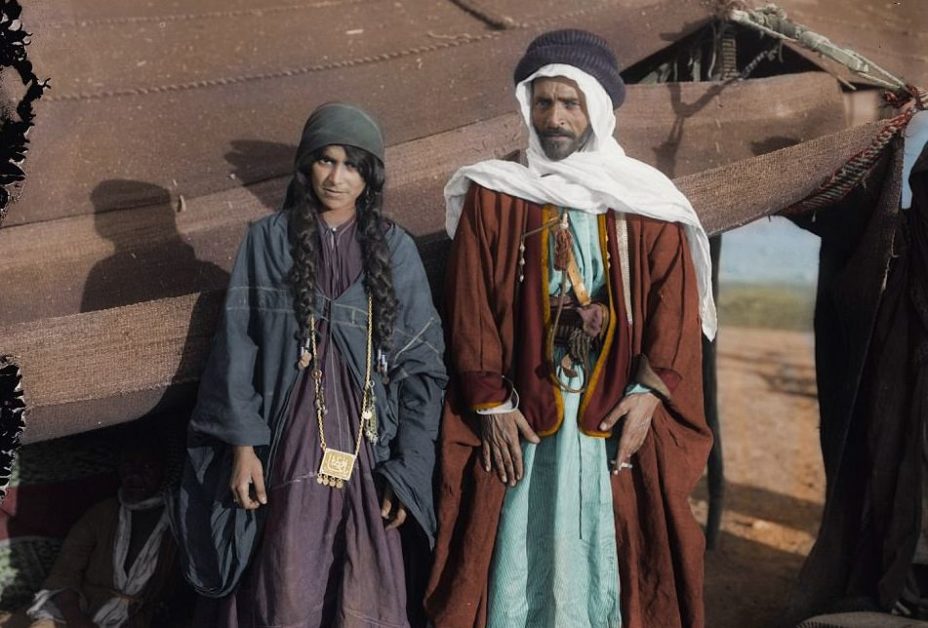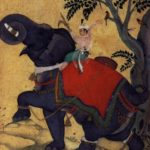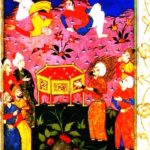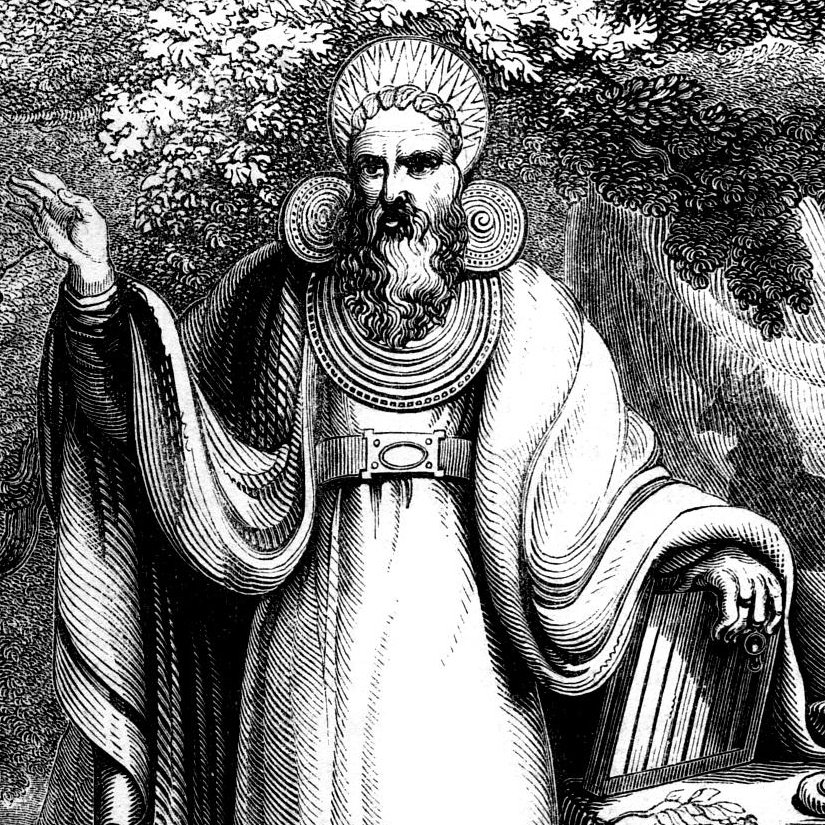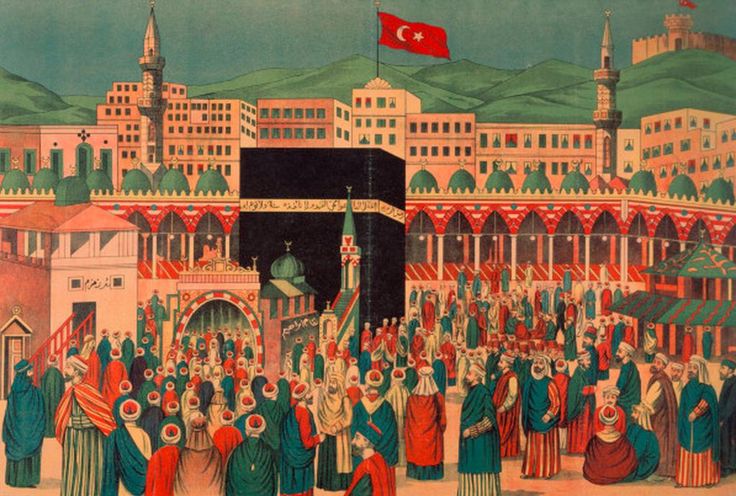The Year of the Elephant is a date that was seared into the collective memories of the people of Mecca as a year in which they were miraculously spared from the ravages of the Christian King Abraha of eastern Yemen. Later Islamic tradition assigns it to the year of Muhammad’s birth because it was so momentous that it seemed only fitting for a great prophet to be born on a great year. However, King Abraha died by AD 555, and an inscription dates the event that almost certainly inspired the legend of the Year of the Elephant to 552, 18 years before Muhammad was born. Early Islamic sources do not give a uniform tradition for Muhammad’s year of birth vis a vis the Year of the Elephant. While most modern Muslims now believe Muhammad was certainly born then, the Islamic early sources give differing dates for Muhammad’s birth (which is hardly surprising, because oral history doesn’t preserve dates with any accuracy):
- Muhammad ibn al-Sa’ib (d. 726): 15 years before the Year of the Elephant
- Ja’far ibn Abi ‘l-Mughira (d. early 8th century): 10 years after the Year of the Elephant
- Al-Kalbi narrating from Shu’ayb ibn Ishaq (d. 805): 23 years after the Year of the Elephant
- Al-Zuhri (d. 742): 30 years after the Year of the Elephant
- Musa ibn ‘Uqba (d. 758): 70 years after the Year of the Elephant
A Short History of Pre-Islamic Yemen
Yemen was a site of extremely early human settlement, with continuous occupation from the Paleolithic.
Farming arrived late in Yemen, probably only about 3100 BC. This may have been brought by a West Semitic-speaking people. These would be the linguistic ancestors (via South Semitic) of the speakers of Modern South Arabian languages, currently spoken in Oman and eastern Yemen. However, the state of archeology in Yemen is simply so primitive that the early cultures have not been even well distinguished yet, so the Semites could have represented a second wave of settlement as late as 2000 BC.
I believe they also began to trade with Abyssinia by 2000 BC (which may have been called Punt in Egyptian and Ophir in the Bible), and I think that these Yemenites were the original people called Cush in the Bible. “Cush” means “burnt” or “black.” Because of this meaning, and because of the kingdom in Sudan called “Kush” in Egyptian, “Cush” has been long identified with Ethiopia. However, from the references to its location in the Bible, this is clearly impossible. Cush in the Bible is clearly in Asia, not Africa.
I believe that the early Yemenites received the name Cushites because the Yemenites tend to have much darker skin than other Semitic speakers. It will require genetic studies to establish if they were darker because of a more pigmented substratum (the Semites, the ancient Anatolians, and the ancient Iranians all carried the major Western depigmentation genes that originated probably between the southeastern shores of the Caspian Sea and the southern shores of the Black Sea, and they carried them with them with the expansion of agriculture) or because of the ancient slave trade across the Red Sea from Abyssinia, but the Yemenites are much darker on average than Syrians are to this day.
The first Semites are probably also responsible for the earliest building of Ma’rib dam, which made Yemen increasingly productive over the following centuries.
Somewhat later came a second wave of Semitic speakers, speaking a divergent West Semitic language, called Central Semitic to distinguish it from the South Semitic of the earlier people. They were the linguistic forbearers of the confusingly named Old South Arabian language group, called this because these language became extinct in the Middle Ages, wiped out in the Islamic conquests. The Arab sources call these people the Qahtanite Arabs.
I place their migrations between 1650 and 1350 BC. There are five reasons for this:
- It would take considerable time to build a sophisticated kingdom from the ground up–there were no great cities in Yemen before ca. 800 BC, and establishing one at such a distance from any other civilization would have been a massive undertaking.
- There needs to be a reason for a migration into such a forbidding place, and I would suggest that the internal migrations that included the Hyksos arriving in Egypt, the expulsion of the Hyksos, or the migration of the Hebrews all might have been a time of sufficient disruption and turmoil.
- There is the issue of the Old Arabian script. The Old Arabian script was taken from the West Semitic alphabet, which was itself adapted from Egyptian hieroglyphs during the period of heavy Semitic settlement of Egypt, ca. 1800 to 1400 BC. By roughly 1300 BC, the West Semitic alphabet had become the Proto-Sinaitic alphabet, but the Old South Arabian script diverged before this point.
- There is the issue of language. By 800 BC, there were at least four distinct Old South Arabian languages in Yemen. These needed time to develop.
- There is a good reason to consider the Qahtanites the first people to fully domesticate the dromedary camel. Unhelpfully, the Semitic languages use the same word for Bactrian and dromedary camels, but Sumerian seems to distinguish between the two, and Sumerian records indicate the first appearance of the domesticated dromedary camel in the window of 1600 to 1200 BC.
With an eagle-eye view of the sources, I believe the Qahtanites can even be identified with reasonable confidence with at least some of the Midianites in the Bible. The Midianites were not necessarily those who were descended from Midian, the son of Abraham by Keturah, but was rather the dwellers of the land of Midian, on the east coast of the Gulf of Aqaba, near the Wilderness of Shur and Havilah, which seems to be the name for the Nejd region. The Midianites (meaning dwellers in Midian) would have included a mixed bag of members of the Midianite tribe, Ishmaelites, and even Cushites who traveled from Yemen–these groups had few settlements and were highly pastoral and were also often merchants.
I believe that when the Qahtanites pushed south, they displaced many of the Semites who were already there and absorbed the rest.
Many of the older group of Semites migrated to Abyssinia, a fertile country without a strong central power to stop their invasion, and some others were pushed east into less habitable areas of the peninsula. The immigrants to Abyssinia became the core culture that established the D’mt kingdom and the Axum kingdom later. This migration explains the Y-DNA patterns in Ethiopia and Yemen today and even the approximate time of the divergence between the shared Ethiopian and Yemenite Y-DNA. It explains the fact that the Semitic languages of Ethiopia are more closely related to Modern South Arabian languages in Oman and eastern Yemen than to the extinct Old South Arabian languages of the great kingdoms of Yemen. It even explains the strong cultural and mostly peaceful (by ancient standards) contacts between Abyssinia and Yemen from at least 700 BC onward–they saw themselves as related peoples.
Four different kingdoms, which had people speaking four distinct Old South Arabian languages, vied for power in Yemen by 800 BC: Saba, Hadramawt, Aswan, and Ma’in. These were more people-groups than geographic locations, though they gave their name to the places they controlled the most securely. Saba first took over Aswan, and it remained the pre-eminent power for centuries, most often possessing hegemony over the other kingdoms. It possessed Ma’rib and expanded the dam there, turning their territory into the richest part of Yemen. The maintenance of the dam was not kept up during a local war, and the dam suffered its first breech in 145 BC, but it was repaired.
As the earliest spice routes developed in Arabia, Hadramawt controlled the watering stations along the southern coast of the peninsula, but they were for some time reduced to the status of confederates of Ma’in. Around 400 BC, the Qataban tribe established their own city and set up their own ruler. In the middle of the second century BC, the Himyarite tribes united and established a true kingdom on the southern coast of Yemen, taking over the ports. At the time, most trade still went over land, so this did not seem as momentous as it would prove to be. This was perhaps the golden age of the caravans of the Hejaz, when trade from India went to Oman and then crossed the southern peninsula overland to Yemen, where it combined with imports from Abyssinia and was carried north to Petra.
Between 800 and 400 BC, time that a chain of towns and oases were established by another group of Semites, the speakers of Northern Arabian, whom I believe can be identified with good confidence with those Midianites and Hejazi people who remained in their homeland after the migration of a group to Yemen. These people were the linguistic ancestors of classical Arabic. They enthusiastically adopted dromedary camels and even used their new mobility to terrorize Israel for seven years before being successfully repelled. The most important of the settlements of the Hejaz was Yathrib (Medina), which, along with the sea port of Jeddah, are the only towns in the Hejaz important enough to be recorded in ancient times.
However, there was a gradual shift from the second century BC onward from primarily land to primarily sea trading routes, which set the city of Aden of the Himyarite kingdom up to be a port of call not only for trade from Abyssinia (thought the Abyssinian-Roman trade actually began largely bypassing Yemen as Roman sailing technologies improved the safety of the passage) but also for trade coming from India and Oman. The Himyarite kingdom gradually expanded at the expense of its neighbors until they were all conquered around AD 300, at which time the capital moved to to Sana’a. The Himyarites controlled not only the coastal ports but also the old caravan trade cities (though at this point, only Sana’a possessed the status of a regional hub) and the area irrigated by the Ma’rib dam, which they expanded to irrigate an area of 25,000 acres.
During this time, in Abyssinia, the kingdom of D’mt (fl. 900s to 400s BC) was succeeded by the kingdom of Axum (fl. ca. 80 BC to AD 825), and local trade with Yemen increased.
Missionaries from Byzantium came to both Axum and the Himyarite kingdom. Axum converted to Christianity ca. 328, but the kings of Himyar saw this as an attempt of the Byzantine emperor to establish hegemony over their kingdom. This political view of Christianity was incorrect, as the experience of Axum proved, but it would dominate the thinking of not only the Yemenites but also the Arabs of the Hejaz. The missionaries were rejected, and in the late 4th century AD, shortly before an aggressive campaign against the Byzantines, the Himyarites converted to Judaism.
Inscriptions in Yemen from this time forward are largely monotheistic, referring to the “Lord of Heaven,” the “Lord of Heaven and Earth,” and “Rahmanan.” Ar-Rahman, the Arabic equivalent, is usually translated as “the beneficent” or “the gracious.” RHMN (as it was written without vowels initially) was a title given to kings and to sovereign pagan gods, but it was applied to the Judeo-Christian God in Yemen over a period of centuries, and specifically to God the Father by Christians, as we shall see.
By the end of the 300s, the process of shifting trade routes had progressed so far that Yemen had been reduced to no more than a port of call and the regional trade hub for the spice trade, while the trade of the Hejaz (that is, the mountains along the Red Sea) was reduced to strictly local significance.
Resentments between the people of the Hejaz and Yemen may date to this time, as there is an Arab tradition that the king Abu Kariba As’ad took Yathrib/Medina ca. 400 on his way to fight the Byzantines, and the people of Yathrib rebelled and killed the king’s son who was left behind to rule them. The Himyarite king returned to wreak vengeance, vowing to cut down the date palms that were the major local industry of the people of Yathrib, and was eventually repulsed by an alliance of all the tribes of Yathrib.
Despite Himyarite royal hostility to Christianity, a number of people in Yemen had converted, including one of the sons of the king and most of the inhabitants of the city of Najran, and a bloody campaign of suppression was launched against the Christians, sparing no one, regardless of status. The Himyarite king claimed that Jews were persecuted in Byzantine lands, so he was perfectly justified in killing all the Christians in his. In one of the most extreme acts, the Himyarite king slaughtered the Christians of Najran in Yemen, who are probably remembered as the People of the Ditch in the Quran, “ditch” (Ukhdud) being the name of a place southwest of Najran. This occurred between AD 518 and 523.
In response to this last event, the king of Axum launched a campaign in AD 525 across the Red Sea and conquered the Himyarite kingdom. A Christian Himyarite viceroy was appointed by the Axumite King Kaleb, but the Axumite general Abraha took it upon himself to seize power for himself. Shaking off all but nominal control of Axum proper, Abraha took Sana’a as his capital. He built churches there, and Christianity grew under his protection.
Around 540, the there was an insurrection centered around the deposed viceroy. Abraha defeated the rebels and then repaired the Ma’rib dam in 541, which had breached during the campaign. Around 540, either immediately before or immediately after Abraha defeated the rebels, an outbreak of plague reached Yemen, forcing Abraha to temporarily disband his army and delaying the repairs on the dam.
In 552, Abraha launched a campaign against northern Arab tribes. This event is recorded in a stone inscription in Yemen, as translated by a Saudi museum, with my additions in square brakets:
With the power (help) of god [the word here is Rahmanan], and the Jesus (=Christian) [the word here is Messiah], King Abraha Zeebman (King’s title), the King of Saba’a, Zuridan and Hadrmaut and Yemen and the tribes (on) the mountains and the coast wrote these lines on his battle against the tribe of Ma’ad ( in ) the battle of al-Rabiya in the month of “Dhu al Thabithan” (April) and fight (against) all the (tribes) of Bani A’amir and appointed the King (the leader) “Abi Jabar” with (tribe) Kinda and (Qahtani tribe) Al (and the leader) “Bishar bin Hasan” with (Tribe) Sa’ad ( and the tribe) Murad and ( the tribe) Hadarmaut (stand) in front of the army against Bani Amir of Kinda and (the tribe) Al in wadi “Zu Markh” and Murad and Sa’ad in wadi Manha on the way to Turban and killed and captured and took the booty in large quantities and the King and fought at Halban and reached Ma’ad and took booty and prisoners, and after that, conquered (from the tribe of Ma’ad) Omro bin al-Munzir.
(It’s significant to note that a trinitarian formula exists in other inscriptions of Abraha, calling on Rahmanan, “his son” the Messiah, and the Ruach, or Holy Spirit–so Rahmanan was applied specifically to God the Father in a Christian context.)
This is the only record of Abraha launching a campaign against northern Arabs rather than in strictly local conflicts. It was directed against Banu ‘Amr, which dwelled between Mecca and Yemen. It was almost certainly this event that was remembered as the Year of the Elephant, when the Christian king Abraha of Yemen marched toward Mecca. It could hardly be later because Abraha was dead before AD 555.
However, there is no awareness of the existence of Mecca in the Yemenite sources. In fact, there is no awareness of the existence of Mecca in literally any pre-Islamic source, even though there were detailed Greek and Roman accounts and plenty of epigraphs in the region for other locations going back centuries. That is simply because Mecca was far too small and insignificant for anyone else to take notice of it. The Meccans knew that Abraha was marching in their direction and were terrified of his approach, not knowing that Abraha had no interest in them and possibly not any awareness of their very existence. However, this event was mythologized as an attack on Mecca that was miraculously averted when Abraha’s elephant refused to transgress against the sacred city.
There is no mention of an elephant outside Islamic sources, but I take the unusual position that it is precisely because there was an elephant that the campaign was remembered. The elephant would have been a bush elephant, closely related to the extinct North African bush elephants with which Hannibal crossed the Alps. These are much smaller and more easily tamed than the larger elephants of the African savanna. A single elephant would have been inconvenient for a Yemenite army, but it would have also been a good weapon of psychological terror.
However, Islamic tradition is impossibly wrong in associating this event with an attack against Mecca (since literally no source is even aware of the existence of Mecca at this point).
After Abraha’s death, his son ruled for a time, but the Sassanid Empire of Persia took Yemen between AD 570 and 572, taking control of the two greatest cities–the port city of Aden, where the majority of the trade passed though, and the capital of Sana’a, the center of the regional caravan trade.
The Sassanids allowed the rest of Yemen to devolve to local tribal powers so long as they maintained a nominally client status, among whom the Himyarites remained important. The local power of Ma’rib and Saba failed to maintain the great dam, however, and there was a massive and final breach in 570 or 575, which caused the migration of as many as 50,000 people, whose formerly fertile irrigated lands were turned to scrub. This event was also recorded in the Quran divine judgement upon Saba.
After the advent of Islam, the territory fell into the hands of unsophisticated northern Arab, and so the dam was not rebuilt until the 1980s.
